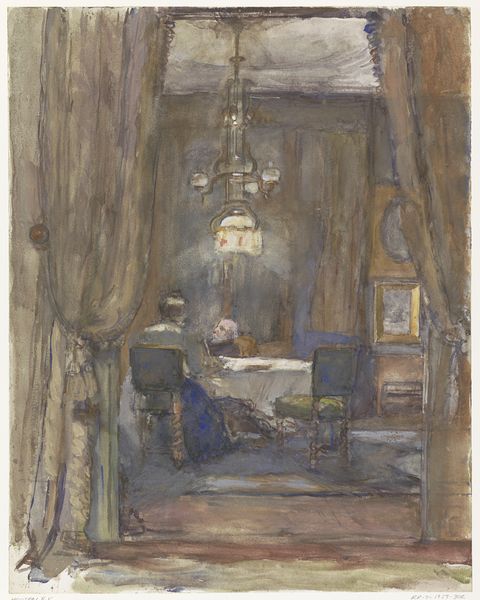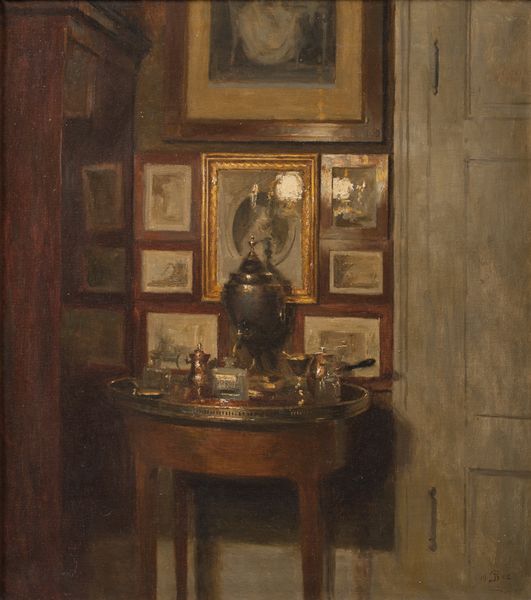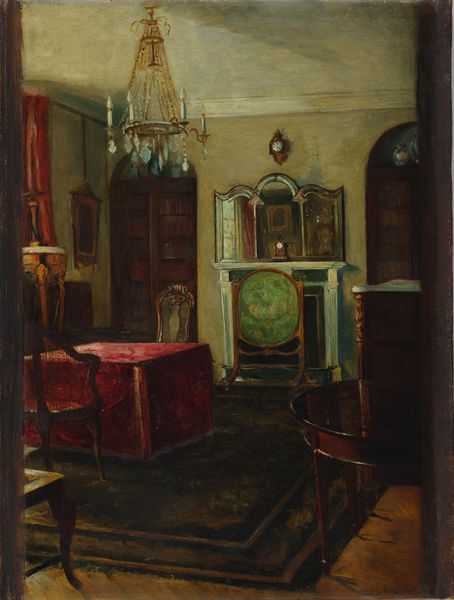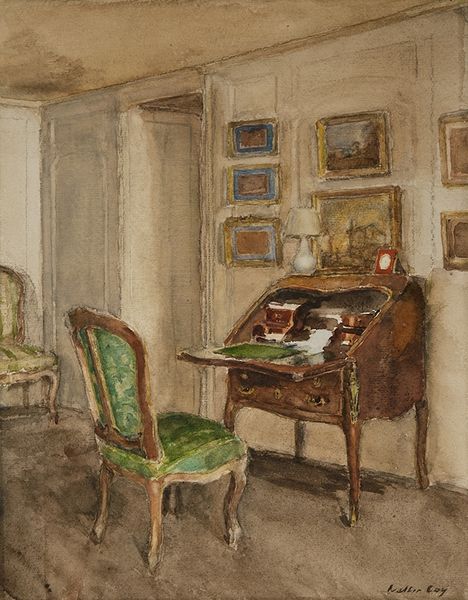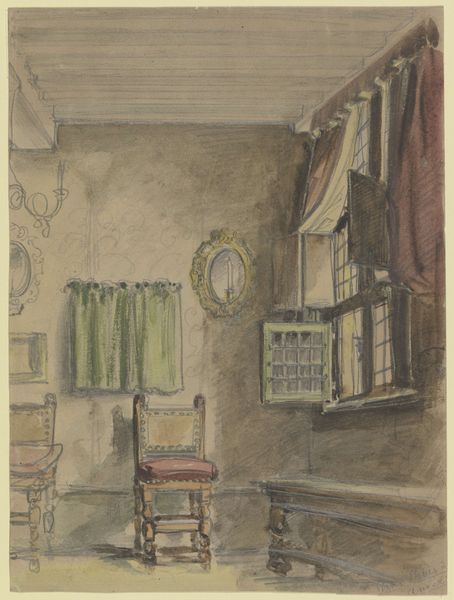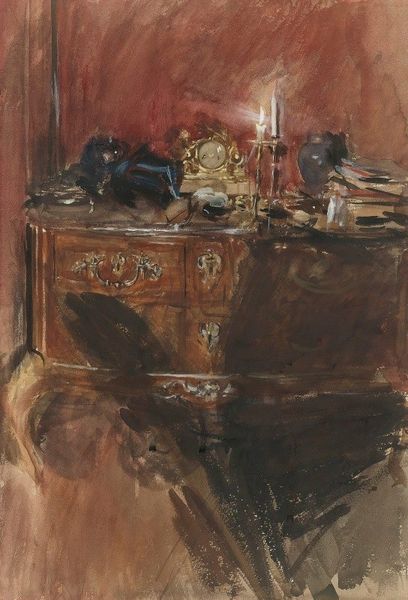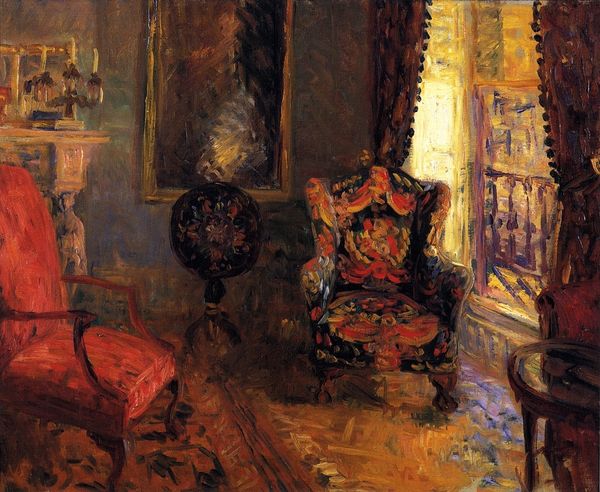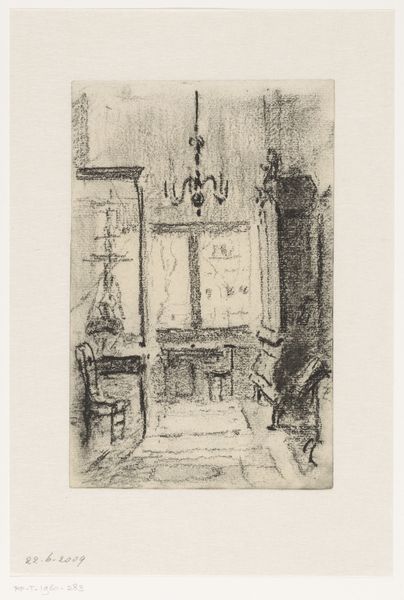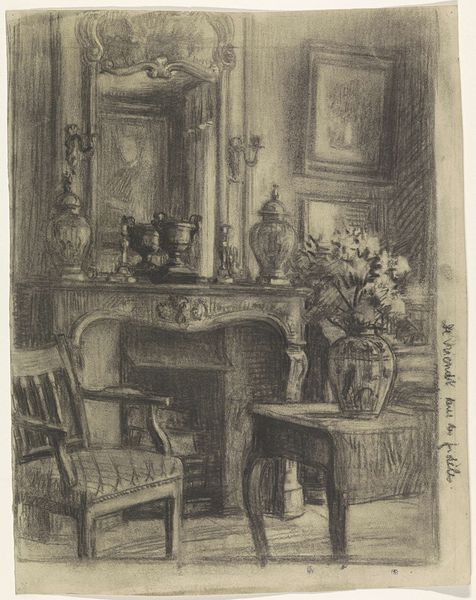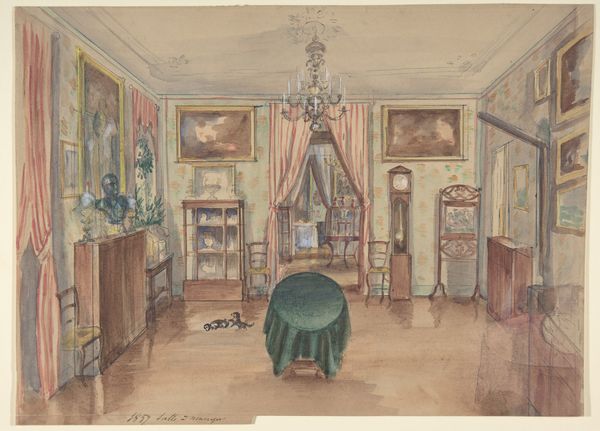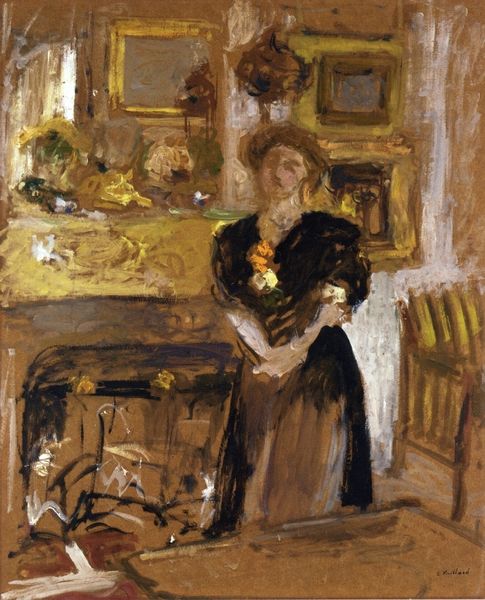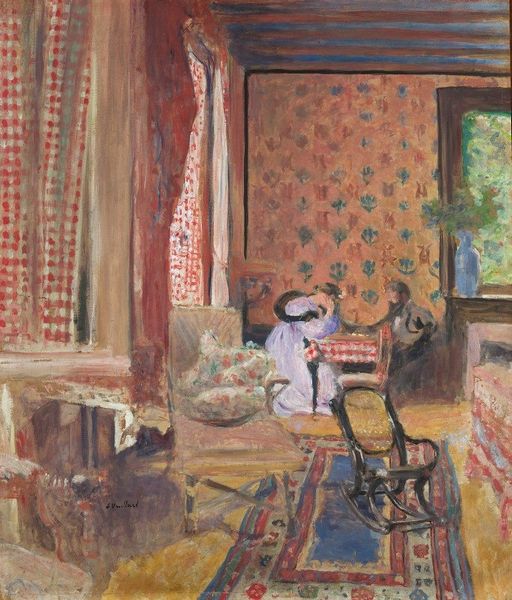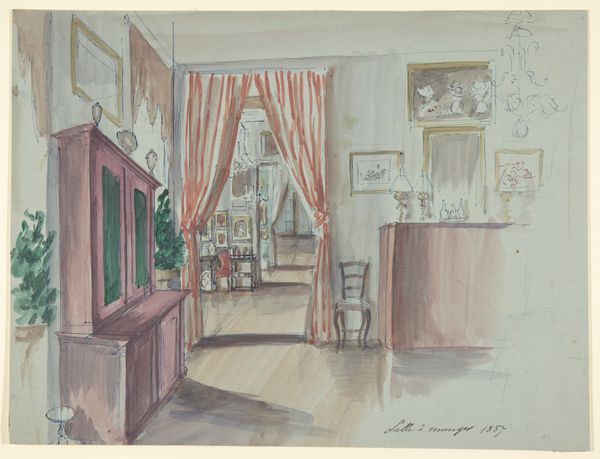
De huiskamer aan de Riouwstraat te Den Haag, bij daglicht 1872 - 1950
0:00
0:00
Dimensions: height 670 mm, width 550 mm
Copyright: Rijks Museum: Open Domain
Curator: This is Barbara Elisabeth van Houten's "De huiskamer aan de Riouwstraat te Den Haag, bij daglicht," a watercolor likely created between 1872 and 1950. What are your initial thoughts? Editor: It feels very...contained. The palette is muted, the room shrouded in shadow. There's a sense of stillness that borders on melancholy. Curator: The use of watercolor certainly lends itself to that feeling. It's interesting to consider the social context in which Van Houten was working. How women artists were often relegated to these domestic spaces and genres. It raises questions about accessibility and the limitations placed on their subject matter. Editor: Exactly! This image performs domesticity rather than simply depicting it. The way the light filters in, almost as a stage spotlight on this quiet gathering... It challenges the notion of the home as solely a space of comfort and points to a controlled environment, almost constructed. Curator: Thinking materially, look at the texture she achieves with watercolor. The curtains, for instance; you can almost feel their weight. It speaks to a careful observation of the material world within her reach. And it's a deliberate artistic choice. A material-based interrogation of interiors that questions how interiority itself is constructed by the domestic worker, who's presumably female in most of these cases. Editor: That careful observation extends to the chairs placed prominently in the foreground. Are they there to imply an absence, an invitation perhaps? The arrangement highlights this rigid social framework that would bind women of the period, physically and intellectually. Curator: It’s a brilliant demonstration of how material conditions intersect with artistic expression. And in many ways that intersect highlights not limitations, but ingenuity and astute social critique from within the boundaries afforded to female creatives of the period. Editor: Absolutely. I find the image strangely unsettling in its quietude, a beautiful testament to the way art can reflect and subtly challenge its environment. Curator: And in doing so, offer critical perspectives on the structures, conditions, and even objects that subtly bind and inspire creative minds.
Comments
No comments
Be the first to comment and join the conversation on the ultimate creative platform.
